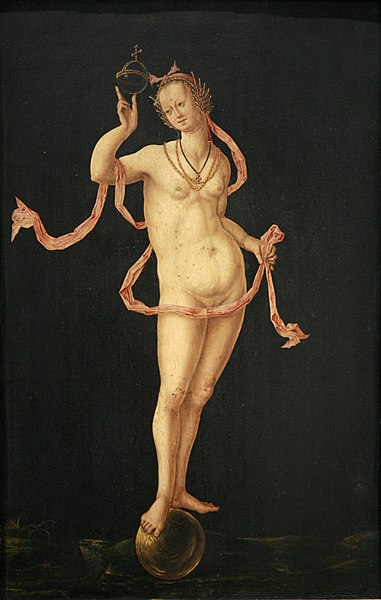Fortuna Huiusce Diei was an aspect of the goddess Fortuna, known primarily for her temple in the Area Sacra di Largo Argentina at Rome. Cicero lists her among the deities who should be cultivated in his ideal state, because "she empowers each day". She thus embodies an important aspect of time as it figures in Roman religion: every day of the year had a distinct and potent nature, which the public priests were responsible for knowing and aligning the community with by means of the religious calendar.
Colossal head believed to be that of the cult statue of Fortuna Huiusce Diei
Ruins of the Temple of the Fortune of This Day (Temple B), Largo di Torre Argentina
Head and arm of the colossal cult statue of Fortuna Huiusce Diei, on display at the Centrale Montemartini
Fortuna is the goddess of fortune and the personification of luck in Roman religion who, largely thanks to the Late Antique author Boethius, remained popular through the Middle Ages until at least the Renaissance. The blindfolded depiction of her is still an important figure in many aspects of today's Italian culture, where the dichotomy fortuna / sfortuna plays a prominent role in everyday social life, also represented by the very common refrain "La [dea] fortuna è cieca".
Fortuna
Fortuna governs the circle of the four stages of life, the Wheel of Fortune, in a manuscript of Carmina Burana
The humiliation of Emperor Valerian by king Shapur I of Persia (260) passed into European cultural memory as an instance of the reversals of Fortuna. In Hans Holbein's pen-and-ink drawing (1521), the universal lesson is brought home by its contemporary setting.
Fortuna lightly balances the orb of sovereignty between thumb and finger in a Dutch painting of ca 1530 (Musée des Beaux-Arts de Strasbourg)







